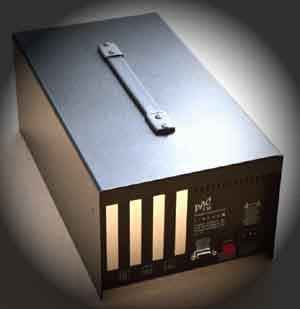|
|
 
|
|
Author
|
Topic: Microphone placement and standing waves
|
|
|
|
|
|
|
|
|
|
|
Michael Schaffer
"Where is the
Boardwalk Hotel?"

Posts: 4143
From: Boston, MA
Registered: Apr 2002
|
 posted 09-18-2007 05:13 PM
posted 09-18-2007 05:13 PM





quote: Ken Lackner
My question is, why is there so much emphasis placed on specifically avoiding the center, when anomalies could occur just about anywhere in the room?
Because they are more likely to occur on the center axis or other geometrically centered areas. Like Steve said, that's why it is a good idea to take a little walk and listen carefully to the pink noise to see if you hear anything that is noticeably different in certain spots from the general area.
Mark - the pcRTA is actually portable, because it has that shoebox sized chassis

but yes, it is a bit heavy and clunky, not any more so than the R2 though. But you don't need a multiplexer, as that is done in the unit. You just connect the 4 mics with a cable assembly they call the "snake" to a DB15 which is on the ISA card (which goes in one of the 4 slots seen on the case).
Anyway, I think it is rather unlikely that it will see much action in the field since we do have 2 R2s and the D2 just shipped out today, but it still is an interesting piece of equipment.
| IP: Logged
|
|
|
|
|
|
|
|
|
|
All times are Central (GMT -6:00)
|
|
Powered by Infopop Corporation
UBB.classicTM
6.3.1.2
The Film-Tech Forums are designed for various members related to the cinema industry to express their opinions, viewpoints and testimonials on various products, services and events based upon speculation, personal knowledge and factual information through use, therefore all views represented here allow no liability upon the publishers of this web site and the owners of said views assume no liability for any ill will resulting from these postings. The posts made here are for educational as well as entertainment purposes and as such anyone viewing this portion of the website must accept these views as statements of the author of that opinion
and agrees to release the authors from any and all liability.
|

 Home
Home
 Products
Products
 Store
Store
 Forum
Forum
 Warehouse
Warehouse
 Contact Us
Contact Us




 Printer-friendly view of this topic
Printer-friendly view of this topic














